#Vic Herman
Text
‘Fetch!’

Artist: Vic Herman (1945)
#pin up style#pin up art#comic book art#pin up cartoon#good girl art#pulp art#comic strip art#1940s#1945#Vic Herman#ww2 cartoon#WW2 art
16 notes
·
View notes
Text
new theory just dropped: the shield and soa are in the same universe in the same way that vice principals and the righteous gemstones are.
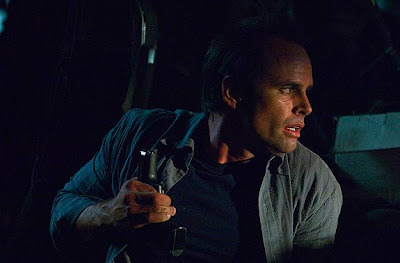


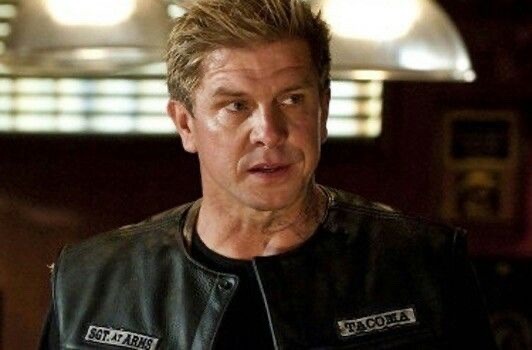
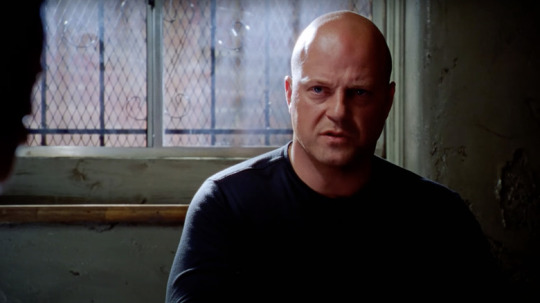
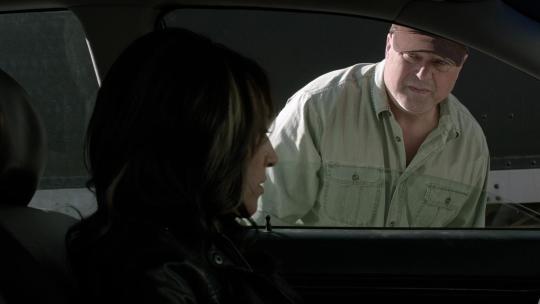
#you csnt stop me from thinking this#dude like what if vic and milo are the same person and that’s how he was hiding out#brb gonna implode#SHOULD HAVE BEEN PART OF THE MAYANS STORYLINE JUST SAYING#the shield fx#sons of anarchy fx#shane vendrell#venus van dam#curtis lem lemansky#herman kozik#vic mackey#milo soa#walton goggins#kenny johnson#michael chiklis#tal
17 notes
·
View notes
Video
youtube
The early 60's period stretched to when then? I agree, this shouldn't be seen as an introduction to me explaining the 60's, since I have my personal view on them, though I believe the middle of the era ended up as the finish for some. True, Herman's Hermits – you saw I am posting their song – shouldn't be seen as one of the also-rans, they had their own peculiarities, though they did follow the set of sonic protocols that were popular at the time. They would've sounded differently, had they been established earlier, but why is that terrible? While they felt a bit watered down in comparison to some of their contemporaries, we should understand the scene then already reached the level, where such players didn't seem out of the ordinary. Of course, the entire 60's didn't stop here.
#herman's hermits#herman's hermits hits#sillhouettes#peter noone#keith hopwood#derek leckenby#karl green#barry whitwam#vic flick#bob crewe#frank slay jr.#mickie most#60's music#rock
0 notes
Text
Proto Rap in 12 Songs
Rap before there was rap in 12 Songs.
Listen to 12 Proto Rap tracks. When Sugar Hill Gang recorded the very first commercial Rap hit in 1979, this form of music to most people, was completely new. But Rap was nothing new! Before There Was Rap, There Were The Last Poets, Oscar Brown, Del Jones' Positive Vibes and ……

(Bat Man) For Days - Johnnie Morisette ((Bat Man) For Days / For Days, 1963)
Billy Green is Dead - Gil Scott-Heron (Free Will, 1972)
Black Man (Too Tough To Die) - Part I & 2 - Cleo Page ( Black Man (Too Tough To Die) - Part I / Black Man (Too Tough To Die) - Part II, 1972)
Blow'Way - Lancelot (Afro'Dadian / Blow'Way, 1971)
Bull "Bleep" - Oscar Brown Jr. (Fresh, 1974)
Charlie's Moonshine Bar - Vic Waters (Charlie's Moonshine Bar / Eight Feet Up, Eight Feet Down, 1975)
Gaccia Ad' Avè - Leone Di Lernia E La Sua "New Rock Band" (Canzoni Rock Tranesi, 1975)
James Brown - The Last Poets (Right On! (Original Soundtrack), 1971)
Laughing - Amanda Ambrose (Laughing, 1973)
Louisiana Rapper - Herman The Soul Burner (Louisiana Rapper- Herman The Soul Burner / Pusherman - J. J. Caillier, 197?).
Mellow Vibes - Del Jones' Positive Vibes (Mellow Vibes / The Last Letter, 1974)
Plea To The People - Curry (Plea To The People / The Beauty Of You, 1971)
More Proto Rap
History of Rap in 10 tracks
Proto Rap in 12 tracks
History of Rap in 20 songs
History of Rap in 25 songs, part 6 of Proto Rap
10 notes
·
View notes
Text
Do y'all like stories about a girlboss mad scientist who has autism and social anxiety and likes committing acts of hubris?
Do y'all like creepy atmospheric podcasts that sound old-timey and from an alternate timeline?
Do y’all like Frankenstein but wish it had a lot more LGBTQ+ characters and a cat?
Have we got a podcast for you!
Experiment 31E is a new(ish) podcast. Season one wrapped in April, and all twelve episodes are available to binge now.
What’s it about?
Experiment 31E is a Frankenstein-inspired, speculative fiction podcast set during an alternate version of the Victorian era that follows the recorded notes of a scientist who is performing a dangerous experiment. As she seeks to perfect her formula and find a suitable specimen for testing, unexpected threats rear their heads while her own motives lurk in the dark.
Now, you might be wondering a few things:
First—how alternate is this version of the Victorian era? Well, some things are the same, some things are different. This story takes place in an alternate timeline, and the differences in the timeline will become more prominent as the story progresses.
Second—is this sci-fi? Fantasy? Horror? It’s a bit of all of them, actually. We use the broad genre label “speculative fiction” because this story features elements from science fiction, fantasy, horror, alternate history, and a smidge of steampunk. There are strange inventions but also alchemy and magic. It is not scary or gory, but it has a sinister air to it. It explores issues of identity, ethics, and mortality, not shying away from the darker aspects of humanity. There are moments of levity, but this is a story where the main character is experimenting on corpses, so it’s not exactly a tale for children.
Third—so…is this just a retelling of Frankenstein? Nope! The bones of this story owe a lot to Mary Shelley’s novel in that it features a scientist trying to reanimate dead matter (there’s also a…let’s say secondary meaning to “Frankenstein-inspired” that you will discover later in season one). But this isn’t just Frankenstein in the Victorian era with a female protagonist. While there will be some similarities (and allusions), this is not the same story.
Who are the characters?
This is a story with a single narrator, a bit like the early days of Welcome to Night Vale. However, there are several secondary characters vital to the plot.
Victoria “Vic” Corvino Trafford, aka The Scientist: The morally gray protagonist and narrator, Vic is an American who inherited a manor belonging to her late father’s family in England. She has been living there for two years at the start of the story. She’s autistic, asexual, gender nonconforming, and most importantly, a James Clark Ross fangirl. She enjoys tinkering in her laboratory, avoiding people, and trying to resurrect the dead. Vic believes in science, not magic, but is willing to give anything a try for her experiment. She is also quite handy with a knife.
John, aka The Boy: John is a stoker from Manchester who used to work in the cotton mills but now works as Vic’s assistant. He’s the Igor to her Frankenstein, the Smithers to her Mr. Burns. He’s assisted her for the two years she has been in England, but she still calls him The Boy. He’s a bit of a yes-man, but there’s more to him than first meets the eye.
Solomon and Rahul: Partners in business and in life, Solomon and Rahul are a perfect balance to each other. Sol can get a bit too hyper-focused, while Rahul is a tad chaotic, but together they equal 1 Functional Person. They run a jewelry store in Manchester—which is actually a front for their alchemy shop in the back room. They are some of the few people Vic trusts enough to tell about her experiment.
Herman: Herman is The Worstᵀᴹ. He’s a resurrectionist, aka a body-snatcher. He digs up fresh corpses and sells them to Vic for her experiments. Vic hates him, but he’s a necessary evil for her purposes.
Vic’s Mother: Vic’s mother is dead, but her influence on her daughter’s life still resonates. Vic’s mother was a scientist herself, and she used to tell Vic fantastical stories about impossible things that inspired Vic’s inventions.
Lydia: The overseer of Vic’s estate back in America. She was once friends with Vic’s mother before working for the household. She’s highly reliable and knows all the family secrets.
Lady Carmichael: An old friend of Vic’s father. She writes letters to Vic and invites her to a ball. Vic would rather eat coal than attend.
Stove: A cat.
Who made this?
Experiment 31E is an independent podcast written, performed, and edited by Lauren Triola. This is her first time making a podcast, so admittedly there was a learning curve when it comes to voice acting and sound editing, but she’s been writing stories for as long as she can remember. Lauren is autistic and asexual, just like the protagonist, and she has a complicated relationship with gender that inspired Vic being gender nonconforming. Lauren is also a bit of a history nerd—people obsessed with the Franklin Expedition might be familiar with her series of blog posts about John Torrington. Most of the music featured in the podcast was written by Lauren’s sister, Shannon, while a few of the simpler themes were written by Lauren. Lauren also runs all the social media sites and is writing this post (hi!).
Who is this for?
Excellent question!
Obviously, fans of Frankenstein will probably enjoy this story, as will people who enjoy retellings or remixes of Frankenstein, like Mackenzi Lee’s This Monstrous Thing. If you love the character Jack from Seanan McGuire’s Wayward Children series then you will most likely love Vic as well, since she is very similar to Jack—as in I-did-not-realize-how-similar-until-it-was-too-late-Seanan-please-don’t-sue similar (basically they’re both a combination of queer/neurodivergent with mad scientist, so if that’s your very specific trope, you’ll love it).
If you participate in Tumblr’s annual book club of Dracula Daily, or listen to the podcast @re-dracula, then you’ll probably enjoy Experiment 31E too. It’s got a classical literature horror feel to it, with an eerie atmospheric sound.
Fans of AMC’s The Terror may enjoy the mix of speculative fiction and history. There are plenty of historical Easter eggs in this podcast—including some references to polar exploration and the Franklin Expedition. While this story takes place a couple years before the expedition, the writer of this podcast is quite obsessed with Franklin and Co., so expect mentions of some crew members to pop up here and there.
If you enjoy Mike Flanagan’s horror-with-feelings style of writing, like Midnight Mass or Haunting of Hill House, then you might enjoy this too. Experiment 31E isn’t straight up horror like the shows in the Flanaverse, but it’s got some philosophical musings on life and death that wouldn’t be out of place in Flanagan’s work.
All in all, this is a story for anyone who likes creepy things. It’s for anyone who likes protagonists who aren’t completely good or evil but fall somewhere in between. It’s for anyone who has ever felt different or been told that there is something wrong with them. Most importantly, it’s for anyone who wants to hear a mad scientist cackle as they defy the laws of nature and bring something unholy back from the dead.
So give it a listen!
Thanks for reading this far! We hope you give Experiment 31E a try! Check out our trailer for season one below:
youtube
50 notes
·
View notes
Note
B, D, J, K, M, T (doesn't have to be just DS if you don't want it to be!)
A -> Z FANDOM ASKS.
B - A pairing–platonic, romantic or sexual–that you initially didn’t consider, but someone changed your mind.
it feels like cheating to say any ships that came from rp because 90% of the time there's no way you'd consider them otherwise, but the one that stands out to me is willie and esme (ft. @retrograderesemblance) cherish them, would never have put them together on my own lol.
beyond that, and this doesn't really count for not ever considering it, but I was a w.illabeth disliker until this year, I read several persuasive defenses, and writing lizzie swayed me. so elizabeth herself changed my mind kinda.
D - A pairing you wish you liked but just can’t.
ok listen. it's s.parrington. i get it intellectually and i see the vision but i just don't like it and i have tried for years it is just not. idk. can't do it.
J - Name a fandom you didn’t think about until you saw it all over Tumblr.
i hope this is dark shadows to all my treasured mutuals whom i single-handedly inundate with ds content all over their dashes. my answer would be e.lisabeth das musical or honestly like ? robespierre of french history kinda has a stan army on here.
K - What character has your favorite development arc/the best development arc?
ohhh who would i say for ds. maybe roger because he gets domesticated, and makes truly wild strides in his relationship with his son. ( go white boy break that patrilineal curse ). weirdly i also kinda wanna say joe is up there ? he has an interesting journey from Carolyn's Rejected Puppy All American Fish Boy to like ... helping vic investigate laura, being ang's chew toy, having a mental breakdown. and also deeply caring about david! maybe i just like it when people start caring about the kid.
elsewhere it's jimothy norrington. easy. character arc of all time.
M - Name a character that you’d like to have for a friend.
not many people on this show because that's a death sentence but lowkey.. natalie dupres (josette's "spinster aunt") bc i think we would really get along. fancy french brunches with the gay aunt and we can talk shit about barnabas. even though she would bully me for my french, and rightfully so.
elsewhereeee hmm. alice k.ingsleigh would make a wonderful friend. sybil c.rawley. max b.lack sails.
T - Do you have any hard and fast headcanons that you will die defending?
most of my headcanons about vicki tbh dan curtis can piss off. namely that girl has autism. she dislikes the task of setting her hair / sleeping on rollers and rarely feels like doing it, but her and carolyn will sometimes set hair for each other for some girl time. roger fencing and liz ice skating. i also know i'm right about specifically vic's and carolyn's music taste (monkees/mamas & the papas/paul revere & the raiders/herman's hermits, and jan&dean/the ventures/elvis/beach boys, respectively). vic is also added in the collins family history. david draws her in after she dies/disappears, and elizabeth has her formally added after she discovers his handiwork.
you can also pry my "elizabeth swann's burgundy dress was esme's" from my cold dead hands ! like. that's such an important one to me sdfgfd.
#i feel like i get these asks and then immediately forget all media i've consumed and any other ships that exist other than rv and norvilla#dying suffering french stalkers#➤ answered. ┊ collinsport 4099.#➤ meme responses. ┊ boo !#➤ ooc. ┊ she’s nauseous,she’s hysterical,and she’s exhausted.
4 notes
·
View notes
Photo

Although she was born in London, and retained a classic English poise all her life, Angela Lansbury, who has died aged 96, was a Hollywood and Broadway star for more than seven decades, and one who was completely unclassifiable. On her film debut, she played Ingrid Bergman’s cockney maid in George Cukor’s Gaslight (1944) and was promptly nominated for an Oscar, though she was never to win one. She graduated to play Laurence Harvey’s evil, possibly incestuous, mother – although she was only three years older than Harvey – in John Frankenheimer’s The Manchurian Candidate (1962), and then a dotty amateur witch in Disney’s follow-up to Mary Poppins, Bedknobs and Broomsticks (1971).
This versatility, allied to her natural grace, vitality and chastely appealing features – her eyes were full, blue and unblinking, her face almost perfectly round, her mouth a cupid’s bow from the studio era – propelled her to stage stardom in Jerry Herman’s Mame (1966) and, in London at the Piccadilly theatre in 1973, as the show-stopping Mama Rose in Gypsy, by Jule Styne, Stephen Sondheim and Arthur Laurents.
Lansbury had been initially reluctant to assume Ethel Merman’s mantle in Gypsy but, like Merman, she gave the performance of her life, full of steel and tenderness in equal measure. Her performance was more nuanced and needy than Merman’s; the critic Robert Cushman described “a slow steady build towards magnificence”.
But she became best known worldwide for Murder, She Wrote, an American television series running from 1984 to 1996, with four subsequent TV films. She played the incisive and level-headed Jessica Fletcher, a retired English teacher, mystery writer and amateur sleuth in the coastal town of Cabot Cove, Maine, a sleepy location with a criminal body count as delightfully high and unlikely as in Midsomer Murders.
“It really was a fluke success,” Lansbury said, “and came at a time when that kind of family entertainment seemed needed.” She added that, of all the characters she played, Fletcher was the one most like herself: intuitive and sensitive, a voice of calm and reason in a troubled time. She gradually assumed ownership of the CBS series. Peter Shaw, whom she had married in 1949, was joint director of the production company; her son, Anthony, and stepson, David, were executive producers, her brother Bruce was supervising producer.
Family was always of paramount importance to Lansbury. She came from strong, muscular stock: her father, Edgar Lansbury, was a lumber merchant and one-time member of the Communist party and mayor of Poplar (his father was George Lansbury, a reforming leader of the Labour party); her mother, Moyna MacGill, was an Irish actor who took Angela to the Old Vic theatre in London from an early age. One of her cousins was Oliver Postgate, the British animator best known for Bagpuss.
She was educated at South Hampstead high school for girls and trained at the Webber Douglas Academy of Dramatic Art. Her father died in 1934, and her mother merged her family – Angela and her younger twin brothers, Edgar and Bruce – with that of a former British Army colonel in India, Lecki Forbes, under one roof in Hampstead.
It was not a happy arrangement.
At the outbreak of war, Moyna decamped with her children to New York, and Angela continued her training for two more years at the Feagin school. While her mother toured Canada in a variety show for the troops, Angela did cabaret turns in Montreal. When Moyna’s agent sent her to Hollywood for an audition, she decided to move the children out there with her.
Nothing much happened at first, so mother and daughter took jobs as sales clerks at Bullocks Wilshire, the art deco department store in Los Angeles, while continuing to audition. Angela was still only 17 when she landed the role in Gaslight, and this set a pattern of playing older than her age. A notable exception was The Picture of Dorian Gray (1945), in which she played Sibyl Vane, the chirpy music-hall singer, a role that brought her second Oscar nomination; through her co-star, Hurd Hatfield, she met her future husband, Shaw. She had been married previously, for just nine months, to the actor Richard Cromwell, who was almost twice her age.
By this point a Hollywood fixture, Lansbury played Elizabeth Taylor’s older sister in National Velvet (1944), sang Jerome Kern’s How’d You Like to Spoon With Me? in Till the Clouds Roll By (1946), fooled with Danny Kaye in The Court Jester (1955), peaked in glory in The Manchurian Candidate, with her third and final Oscar nomination, and joined another great cast list in The Greatest Story Ever Told (1965), which David Lean took over as director from George Stevens.
Lansbury took American citizenship in 1951, and made her Broadway debut opposite Bert Lahr in Feydeau’s Hotel Paradiso in 1957, following with Helen in Shelagh Delaney’s A Taste of Honey in 1960 and, most significantly, Cora Hooper Hoover, the corrupt mayor in Sondheim and Laurents’s 1964 flop Anyone Can Whistle. The show, which has since become a concert favourite, closed in a week, but Lansbury came out of it with flying colours, commended by critics for her agility and engaging personality; she was even likened to a young Bette Davis.
This led to her Mame acclaim, and her first Tony award. Lansbury played Auntie Mame, a free-spirited woman who picks herself off the floor of the stock market crash to sing Bosom Buddies (Lansbury duetted with Bea Arthur) and who ultimately recoups her fortunes by marrying a southern aristocrat. She won a second Tony in Herman’s next show, Dear World (1969), a musical based on Jean Giraudoux’s The Madwoman of Chaillot, in which she appeared to be dressed in “a wedding cake made of cobwebs”, according to the critic Walter Kerr.
A belated London debut followed in 1972, when she joined the Royal Shakespeare Company at the Aldwych in Edward Albee’s All Over, playing the mistress of a dying man, locked in battle with Peggy Ashcroft as his wife. She took Gypsy back to Broadway in 1974 for a few months, winning her third Tony, then joined the National theatre at the Old Vic in 1975 to play a fairly youthful, glamorous Gertrude to Albert Finney’s thickset, plainspoken and powerful Hamlet, directed by Peter Hall; the production was part of the opening season in the National’s new home on the South Bank in 1976.
Back on Broadway, she hit another great milestone in Sondheim and Hugh Wheeler’s Sweeney Todd (1979), playing the gleefully cannibalistic, pie-making Nellie Lovett (and winning a fourth Tony) opposite Len Cariou’s demon barber in a dark and scintillating production by Hal Prince that played on Broadway for a year before touring the US for another 11 months.
Before Murder, She Wrote, a series of starry film roles included John Guillermin’s Death on the Nile (1978) with Peter Ustinov, David Niven, Bette Davis, Mia Farrow and Maggie Smith; Guy Hamilton’s The Mirror Crack’d (1980), in which she did some sleuthing stretches by playing Agatha Christie’s Miss Marple, with Elizabeth Taylor, Kim Novak, Tony Curtis and, in his penultimate movie, Rock Hudson; Wilford Leach’s rocked-up The Pirates of Penzance (1983), opposite Kevin Kline as the Pirate King; and Neil Jordan’s wonderfully weird The Company of Wolves (1984), in which she played yet another eccentric old granny figure.
She did voices for two animated movies – Beauty and the Beast (1991, for Disney) and Anastasia (1997, for 20th Century Fox) – but was not in a feature movie again until she played Great Aunt Adelaide in Kirk Jones’s Nanny McPhee (2005), starring and written by Emma Thompson. Subsequently, she was with Jim Carrey in Mr Popper’s Penguins (2011).
For many years, Lansbury kept a home in County Cork, Ireland, where she and Shaw would spend two months each year while maintaining their base in Brentwood, Los Angeles. She rented an apartment in New York in 2007 to return to Broadway in Terrence McNally’s Deuce, a specially crafted two-hander for her and Marian Seldes about former tennis partners reliving past glories while watching a match at Flushing Meadow, and switching their heads from side to side during the rallies.
The play was not a huge hit, but Lansbury was electrifying and was greatly moved by the affection with which audiences greeted her. She had not been on Broadway since a possibly ill-advised 1983 revival of Mame.
Regarded by now as a national treasure, in 2009 she won her fifth Tony as Madame Arcati in Noël Coward’s Blithe Spirit, wearing a bright red wig and “with a superfluity of bad jewellery, the gait of a gazelle and a repertory of poses that bring to mind Egyptian hieroglyphs”, wrote Ben Brantley of the New York Times.
At the end of the same year in New York, she appeared for six months as Madame Armfeldt in Trevor Nunn’s Menier Chocolate Factory revival of Sondheim and Wheeler’s A Little Night Music, winning plaudits for her nostalgic litany of fading qualities in Liaisons: “Where is style? Where is skill? Where is forethought? Where’s discretion of the heart? Where’s passion in the art? Where’s craft?”
The Academy of Motion Picture Arts and Sciences compensated for her lack of an Oscar with an award for “some of cinema’s most memorable characters” in 2013, and the following year she was made a dame, and took Madame Arcati to the Gielgud theatre in London. She was Aunt March in the BBC’s adaptation of Little Women (2017), and in 2018 she both appeared as a balloon-seller in Mary Poppins Returns, and joined up with another member of that cast, Dick Van Dyke, as guardian angels in the Christmas tale Buttons.
Shaw predeceased her in 2003, and she is survived by Anthony, David, her daughter, Deirdre, three grandchildren, five great-grandchildren and her brother Edgar.
🔔 Angela Brigid Lansbury, actor, born 16 October 1925; died 11 October 2022
Daily inspiration. Discover more photos at http://justforbooks.tumblr.com
24 notes
·
View notes
Text
William Edward Chiaiese was born on October 20, 1934 to John and Emily Chiaiese(key-ah-tze) in Dorchester , Massachusetts . The family later moved to Squantum , Mass. John changed the family name to Chase, understanding that the Italian name Chiaiese was both hard to spell and pronounce.
While Bill was growing up his parents felt that he needed to broaden his horizons and arranged for him to take violin lessons. Bill did not even touch the trumpet, until the middle of his high school years. A newspaper clipping dated 1956 pictures Bill listed as a Corporal in the 26th Yankee Infantry Division Band holding a bass drum. Bill's experience as a drummer changed his life and the lives of many others. During a St. Patrick's Day parade he had to lug his huge drum for five miles enduring the miserably cold pouring rain. It hurt so bad that he decided never to do it again, he asked his father to dig out his old trumpet for him.
Not long after switching to trumpet, Bill was playing first chair in the school orchestra and classical music was his main love. Early 1950's a neighbor coaxed Bill to attend a Stan Kenton concert with him. This was the band with Maynard Ferguson, Buddy Childers, Conte Condoli, etc. After that night, Bill was hooked on jazz and high note trumpet.
As you can tell, this time period in Bills life is hard to decipher. Bill was doing so much playing, and he became very good so quickly, that the dates are very confusing. Since Maynard left the Kenton Band and headed to Hollywood in 1953, Bill must have seen Kenton before then. I can only assume that he switched to the trumpet around 1951 at about the age of 16.
Boston Globe writer Ernie Santosuosso wrote about Bill in 1971, “Bill Chase has been experimenting with sounds all of his life. As a youngster in the Fields Corner community of Dorchester , he was intrigued by the drums. Since he didn’t own a set, he’d improvise with the aid of a couple of galvanized steel rubbish barrels.
Bill’s backyard became his bandstand as he beat out precocious rhythms atop the inverted barrels. The little Italian lady, who sat at her kitchen window, regarded Bill as a pet but voiced emphatic objections to his make-shift paraddidling on the barrels. So, when Bill’s father, who played trumpet, decided to retire his horn, the boy’s curiosity inevitably led him to the instrument and away from the barrel- house. The maturation process as a trumpeter had begun for Bill.
The ex-drummer put his horn to work for St. Ambrose’s Band, then for Boston English High, Berklee, Stan Kenton, Maynard Ferguson, and Woody Herman. The little old Italian lady was given special command performances in her kitchen and she almost lit a candle in thanksgiving for young Bill’s return to his barrels and rubbish deposits.”
He started playing his fathers old trumpet the summer before his junior year in high school and showed a natural aptitude for it. He soon joined a Drum and Bugle Corps, along with his school groups. This, was prior to his stint in the Boston National Guard where he said he wrote music and played trumpet in 1957. He served for six months in the guard band, which honed his talents as a trumpeter and arranger.
Chase played lead trumpet with Maynard Ferguson in 1958, Stan Kenton in 1959, and Woody Herman's Thundering Herd during the 1960s.
One of Chase's charts from this period, "Camel Walk", was published in the 1963 Downbeat magazine yearbook. From 1966 to 1970 he freelanced in Las Vegas, working with Vic Damone and Tommy Vig. In 1967 he led a six-piece band at the Dunes and Riviera Hotel where he was featured in the Frederick Apcar lounge production of Vive Les Girls, for which Chase arranged the music.
In 1971 he started a jazz rock band named "Chase" that mixed pop, rock, blues, and four trumpets.[5] The debut album Chase was released in April 1971. Chase was joined by Ted Piercefield, Alan Ware, and Jerry Van Blair, three jazz trumpeters who were adept at vocals and arranging. They were backed up by a rhythm section consisting of Phil Porter on keyboards, Angel South on guitar, Dennis Johnson on bass, and John "Jay Burrid" Mitthaur on percussion. Rounding out the group was Terry Richards, who was the lead vocalist on the first album. The album contains Chase's most popular song, "Get It On", released as a single that spent 13 weeks on the charts beginning in May 1971. The song features what Jim Szantor of Downbeat magazine called "the hallmark of the Chase brass—complex cascading lines; a literal waterfall of trumpet timbre and technique." The band received a Best New Artist Grammy nomination, but was edged out by rising star Carly Simon.
Chase released their second album, Ennea, in March 1972; the album's title is the Greek word for nine, a reference to the nine band members. The original lineup changed midway through the recording sessions, with Gary Smith taking over on drums and G. G. Shinn replacing Terry Richards on lead vocals. The third album, Pure Music, moved the band toward jazz. Two of the songs were written or co-written by Jim Peterik of the Ides of March, who also sings on the album, along with singer and bassist Dartanyan Brown.
Chase's work on a fourth studio album in mid-1974 came to an end on August 9, 1974. While en route to a scheduled performance at the Jackson County Fair, Chase died in the crash of a chartered twin-engine Piper Twin Comanche in Jackson, Minnesota, at the age of 39. The pilot and co-pilot were killed, as were keyboardist Wally Yohn, guitarist John Emma, and drummer Walter Clark.
Source: Kevin Seeley/Wikipedia

2 notes
·
View notes
Text
THIS DAY IN GAY HISTORY
based on: The White Crane Institute's 'Gay Wisdom', Gay Birthdays, Gay For Today, Famous GLBT, glbt-Gay Encylopedia, Today in Gay History, Wikipedia, and more …

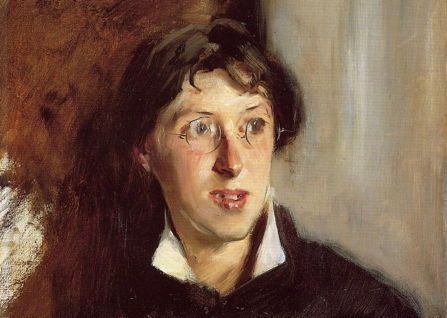
1856 – The French Victorian writer Vernon Lee was born on this date (d.1935). Also known as Violet Paget, she was responsible for introducing the concept of "empathy" (Einfühling) into the English language. Empathy was a key concept in Lee's psychological aesthetics which she developed on the basis of prior work by Theodor Lipps. Her response to aesthetics interpreted art as a mental and corporeal experience. This was a significant contribution to the philosophy of art which has been largely neglected.
She fell in love with three women in succession, and fully expected, being the Victorian she was, to live out her life with each of them, falling swooning into her fainting bed each time the friendship ended. She kept a faded portrait of her first love over her bed; her second love announced her marriage to (horrors!) a Jew, which required liberal application of smelling salts; and her third simply drifted away.


1980 – Ben Whishaw is an English actor. He is known for his stage role as Hamlet; his roles in the television series Nathan Barley, Criminal Justice, and The Hour; and film roles including Perfume: The Story of a Murderer, I'm Not There, Bright Star, Brideshead Revisited, and Cloud Atlas. He played the role of Q in the James Bond film Skyfall, and will be the voice of Paddington Bear in the 2014 film, Paddington.
Whishaw was born and raised in Clifton, Bedfordshire. He has a fraternal twin brother, James, and was a member of the Bancroft Players Youth Theatre at Hitchin's Queen Mother Theatre. He attended Samuel Whitbread Community College in Shefford where he first rose to prominence during collaborations with their offshoot theatre company, Big Spirit. He graduated from the Royal Academy of Dramatic Art in 2003.
Whishaw was involved in many productions with Big Spirit, perhaps most notably If This is a Man (also performed as The Drowned & The Saved), a piece devised by the company based on the book of the same name by Primo Levi, a survivor of Auschwitz concentration camp. It was adapted into a physical theatre piece by the group and taken to the 1995 Edinburgh Festival, where it garnered five-star reviews and great critical acclaim.
As the lead in Trevor Nunn's 2004 production of Hamlet at the Old Vic, he received highly favourable reviews and was nominated for the Olivier Award for Best Actor and the Ian Charleson Award. The role was shared with Al Weaver in an unusual arrangement that saw Whishaw playing all nights except for Mondays and matinées. Nunn is reported to have made this arrangement due to the youth of the two actors playing the lead, to relieve some of the pressure on each.
Whishaw appeared in the 23rd James Bond film, Skyfall, in the role of Q.He portrayed a younger Q than in previous films; Peter Burton and Desmond Llewelyn both received the role when they were in their forties, while Llewelyn and John Cleese played the role into their eighties and sixties, respectively.
In 2015, Whishaw co-starred in The Lobster, a romantic science fiction drama from Greek director Yorgos Lanthimos; appeared in Suffragette, a story of the early feminist movement written by Abi Morgan and also starring Carey Mulligan, Helena Bonham Carter, Meryl Streep and his The Hour co-star, Romola Garai; reprised his role, Q, in Spectre, the 24th James Bond film; and played author Herman Melville in Ron Howard's In the Heart of the Sea.
The star has been famously guarded about his personal life, only confirming his sexuality publicly last year when he revealed he had privately entered into a civil partnership with Australian composer Mark Bradshaw in 2012.
More recently he has opened up about his experiences of coming out:
"It was never a secret, everyone around me in my life knew … It's just very hard to know how to say it, in a way, with some sort of dignity and to remain private … It was something that happened at that time and now I'm very happy it's just a fact and I can get on with life."

2009 – Uganda: The Anti-Homosexuality Act bill is submitted to Parliament, calling for the death penalty of those convicted of homosexuality. After dropping the death penalty to life in prison, the bill passed. The Constitutional Court of Uganda ruled the law invalid in 2014.

2011 – 15 year-old Jamie Hubley, the son of Ottawa city councillor Allan Hubley, commits suicide after having blogged for a month about the anti-gay bullying he was facing at school. The bullying had begun as early as Grade 7, with students on Jamie's bus attempting to stuff batteries in his mouth because he preferred figure skating over hockey.


4 notes
·
View notes
Text

Dirty Mary, Crazy Larry (John Hough, 1974)
Cast: Peter Fonda, Susan George, Adam Roarke, Vic Morrow, Eugene Daniels, Kenneth Tobey, Roddy McDowall, Lynn Borden, Adrianne Herman, James W. Gavin. Screenplay: Lee Chapman, Antonio Santean, based on a novel by Richard Unekis. Cinematography Michael D. Margulies. Production design: Philip Leonard. Film editing: Christopher Holmes. Music: Jimmie Haskell.
"Dirty Mary" is Mary Coombs (Susan George), a petty thief and groupie who gets involved with Larry Rayder (Peter Fonda), a would-be NASCAR star, when he pulls off a supermarket heist with the aid of Deke Sommers (Adam Roarke), an alcoholic auto mechanic, and goes on a run that develops into a widespread, high-speed car (and helicopter) chase, masterminded by state police captain Everett Franklin (Vic Morrow). And that's pretty much all you need to know about Dirty Mary, Crazy Larry, except that the title does a disservice to Deke, the third in the trio and the only close-to-interesting character in the film. Mary and Larry might as well be animated cartoons for all the humanity their characters generate, and George and Fonda play them accordingly. (George's manic performance, often lapsing into her native British accent, got on my nerves.) But Roarke makes some effort to provide some nuance to Deke, a loser whose fondness for the bottle makes him unemployable even though he's shown to be a master at making bashed-up automobiles run. He's also somewhat in love with Larry, his one chance at redemption. Otherwise, the real stars of the film are the cars, a 1966 Chevrolet Impala, a 1969 Dodge Charger, a bunch of Dodge Polara police cars, and that helicopter. You pretty much know how it's all going to end, and when it does it stops, having accomplished the inevitable with no need to point a moral or adorn a tale.
5 notes
·
View notes
Text
I WAS A TEENAGE WEREWOLF (1957) – Episode 153 – Decades Of Horror: The Classic Era
“All right now, we’ll move in stagger fashion. We’ll circle the outer edges first and keep going round and round till we meet in the center.” And that’s called a “search grid?” Join this episode’s Grue-Crew – Chad Hunt, Daphne Monary-Ernsdorff, Doc Rotten, and Jeff Mohr – as they go for the winning combination of mad scientist and teenage angst in I Was a Teenage Werewolf (1957).
Decades of Horror: The Classic Era
Episode 153 – I Was a Teenage Werewolf (1957)
Join the Crew on the Gruesome Magazine YouTube channel!
Subscribe today! And click the alert to get notified of new content!
https://youtube.com/gruesomemagazine
ANNOUNCEMENT
Decades of Horror The Classic Era is partnering with THE CLASSIC SCI-FI MOVIE CHANNEL, THE CLASSIC HORROR MOVIE CHANNEL, and WICKED HORROR TV CHANNEL
Which all now include video episodes of The Classic Era!
Available on Roku, AppleTV, Amazon FireTV, AndroidTV, Online Website.
Across All OTT platforms, as well as mobile, tablet, and desktop.
https://classicscifichannel.com/; https://classichorrorchannel.com/; https://wickedhorrortv.com/
A troubled teenager seeks help through hypnotherapy, but his evil doctor uses him for regression experiments that transform him into a rampaging werewolf.
Director: Gene Fowler Jr.
Writers: Herman Cohen, Aben Kandel
Makeup Creator: Phillip Scheer
Selected Cast:
Michael Landon as Tony Rivers
Yvonne Lime as Arlene Logan
Whit Bissell as Dr. Alfred Brandon
Charles Willcox as Jimmy (as Tony Marshall)
Dawn Richard as Theresa
Barney Phillips as Detective Donovan
Ken Miller as Vic
Cynthia Chenault as Pearl (as Cindy Robbins)
Michael Rougas as Frank
Robert Griffin as Police Chief P.F. Baker
Joseph Mell as Dr. Hugo Wagner
Malcolm Atterbury as Charles Rivers
Eddie Marr as Doyle
Vladimir Sokoloff as Pepe the Janitor
Louise Lewis as Principal Ferguson
S. John Launer as Bill Logan (as John Launer)
Guy Williams as Officer Chris Stanley
Dorothy Crehan as Mrs. Mary Logan
A young Michael Landon, just a few years before rising to fame as “Little Joe” Cartwright in Bonanza, stars as Tony Rivers, a troubled teen struggling with anger management. Whit Bissell is featured as Dr. Alfred Brandon, a psychologist (or mad scientist) with ulterior motives. Yes! Oh, yes, indeed! It’s the AIP/Herman Cohen campy classic, I Was a Teenage Werewolf. The Grue-Crew is in full Drive-In Theater mode for this one.
High-quality versions of I Was a Teenage Werewolf, streaming or physical media, are not available, but there is a reason. Susan Hart, the actress and widow of AIP co-founder James Nicholson, owns the rights to eleven AIP films outright: It Conquered the World (1956) and its remake Zontar, The Thing from Venus (1966); Invasion of the Saucer Men (1957) and its remake The Eye Creatures (1965); I Was a Teenage Frankenstein (1957); I Was a Teenage Werewolf (1957); The Amazing Colossal Man (1957); Terror from the Year 5000 (1958); Apache Woman (1955); The Oklahoma Woman (1956); and Naked Paradise (1957). She frequently negotiates rights for merchandise and theatrical showings, but physical media has not been updated for release in decades. You can, however, purchase a VHS tape of the movie.
Gruesome Magazine’s Decades of Horror: The Classic Era records a new episode every two weeks. Up next in their very flexible schedule, as chosen by Chad, is The Wasp Woman (1959). Yes, they’re sticking with 1950s B-movies, but moving from AIP/Herman Cohen on to Film Group/Roger Corman!
Please let them know how they’re doing! They want to hear from you – the coolest, grooviest fans: leave them a message or leave a comment on the Gruesome Magazine YouTube channel, the site, or email the Decades of Horror: The Classic Era podcast hosts at [email protected]
To each of you from each of them, “Thank you so much for watching and listening!”
Check out this episode!
2 notes
·
View notes
Photo

Andy White, a member of the “fifth Beatle Club” was born on July 27th 1930.
Andy was a session musician, he was born in Glasgow in 1930 and at 12 year old he joined the Scouts, then their pipe band playing drums. He became a session drummer and played with jazz and swing bands in the 50’s. He joined the jazz outfit The Vic Lewis Band which took him to the American Northeast where he backed rockers like Chuck Berry, the Platters and Bill Haley & the Comets.
Andy however became best known for a single session at EMI’s Abbey Road studios when he was called in at the last moment to stand in for Ringo Starr.
On September 12th 1962, when John, Paul and George brought Ringo along to the studios for the recording of Love Me Do, their producer, George Martin, was taken by surprise. He had been expecting Pete Best, but the three of them had just sacked Best. Martin asked to audition Ringo, but once he had heard him play, he decided to call in White, a seasoned performer who knew his way around a recording studio. White played drums with the Beatles on three tracks, including their first hit single, Love Me Do, and its B-side P.S I Love You. He is one of a number touted as “The Fifth Beatle”
As well as the Beatles’ session, White played on records by Herman’s Hermits, Billy Fury, Rod Stewart, Anthony Newley, Bert Weedon, Tom Jones and Lulu’s big hit “Shout” His longest running gig was playing drums in Marlene Dietrich’s touring band. The Pianist at the time was Burt Bacharach and Andy went on to play with Burt as well in the 1965 comedy What’s New, Pussycat?
After playing in the BBC Scottish Radio Orchestra for sometime he moved to America where he taught Americans to play in pipe and drum bands in New Jersey. Another claim to fame was teaching drums to Steven Van Zandt who starred in the hit US show The Sopranos, and was a member of Bruce Springsteen's E Street Band.
Andy White passed away on 9th November 2015 in New Jersey after suffering a massive stroke. He was 85.
There is a wee bit more about Andy in this article in the Record from four years ago. http://www.dailyrecord.co.uk/…/scots-percussionist-paid-fiv…
10 notes
·
View notes
Note
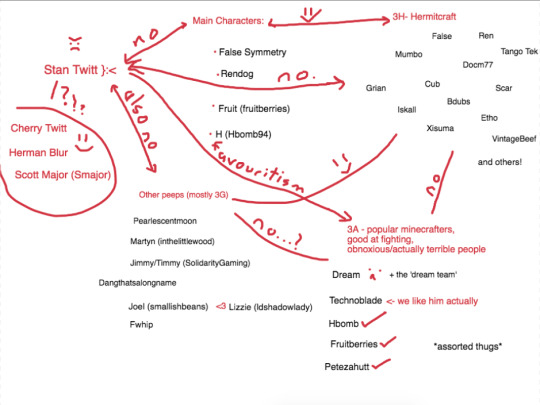
how's this for an explanation of Battle Scars?
VIC BELOVED!! :D ahdhehdhs THIS IS AMUSING and the squiggly little faces… [holds this gently] Gotta love the “Herman Blue :)”
Ngl none of the 3A mcyt kids are real “villains”, they’re just affected by Stan / under favouritism by Stan. Except for the bullies / random mean kids, those are the toxic Internet people >.>
I’m really happy people still enjoy BS :D thanks for the ask!! <3 <3
9 notes
·
View notes
Text
[Outside, the press are teeming.]
Victor: You know the drill.
Little boy: Please sign my hat, Captain Amazing.
(Amazing shoves him aside)
Amazing: Herman, give me a flash. (poses with old man in wheelchair for photo, then shoves him away) Hey, how are you tonight?
Becky, a reporter: Captain, how did you know where to find the Red Eyes?
Amazing: Becky, it's...what I do.
Another Reporter: Thanks to you the city is almost crime-free. So what do you do with your free time?
Amazing: I wish that I had some free time.
Becky: People are saying that you're so 'amazing' you're going to put yourself out of a job. Have any comments on that?
Amazing: That's one problem I look forward to.
Becky: And is it true that you lost your Pepsi endorsement?
Amazing: (glances at Vic) I...hadn't heard that.
Victor: Thanks so much for your questions. Thank all of you.
Becky: You sure, Captain, you have no comments regarding your Pepsi situation?
(Amazing's limo drives away.)
0 notes
Photo
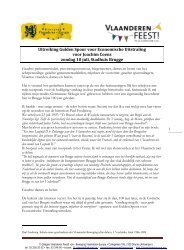


767) Vlaanderen-Europa, Flanders-Europe, Flandria-Europa - flamandzka prywatna organizacja, która organizuje działania w ramach Święta Wspólnoty Flamandzkiej i wokół uznania zasług dla Wspólnoty Flamandzkiej w perspektywie międzynarodowej. Organizacja składa się z dwóch organizacji non-profit:
Elfdaagse Vlaanderen-Europa: organizacja i wsparcie działań w Elfdaagse (od 1 do 11 lipca) w okresie poprzedzającym Święto Wspólnoty Flamandzkiej. W 2010 roku wraz z VRT zorganizowała udaną serię koncertów Vlaanderen-Muziekland. Od 2015 roku koncert, który VRT 11 lipca Elfdaagse Vlaanderen-Europa transmituje na żywo „Vlaanderen Feest!”
Beweging Vlaanderen-Europa: prezentacja Gulden Spoor dla wizerunku kulturowego, społecznego lub gospodarczego. Ta nagroda jest kontynuacją Nagrody Ankera, mającej na celu zachęcanie belgijskich firm do zakotwiczenia się na rynku lokalnym, którą po raz pierwszy otrzymał w 1994 roku Aimé Desimpel.
Gulden Spoor (Złote ostrogi):
2000: Eric Suy, Peter Piot, René De Feyter, Lutgart Van den Berghe, Karel Van Miert
2001: Martin De Prycker, Jos Van Immerseel, Désiré Collen, Kim Clijsters
2002: Pedro Brugada, Phil Bosmans, Fred Van Leuven
2003: Catherine Verfaillie, siostra Simone
2004: Els De Temmerman
2005: Eddy Bruyninckx, Manu Ruys, Guido van Gheluwe
2006: Antoon Dieusaert, Peter Leyman, Godfried Lannoo i Patricia Carson
2007: Connie Neefs, Jean-Pierre Rondas, Gui Celen, Frans Crols, Norbert d'Hulst, Jan De Nul Group
2008: Luc Famaey, Jeanne Devos, Urbain Vandeurzen
2009: Dirk Vyncke, Gabriel Fehervari, Louis Verbeeck, Gwij Mandelinck
2010: Chris Maene, Ivan Mertens, Stefan Top
2011: Joachim Coens, Hans Bourlon, Gert Verhulst
2012: Frans Debrabandere, Miel Cools, Esmeralda Peleman, Rugbyclub Dendermonde
2013: Chris Lomme, Luc Devoldere, rodzina Van Rompuy (Argenta)
2014: Jan Caeyers (muzykolog, dyrygent i beethovenista); Hein Deprez (dyrektor wykonawczy grupy UNIVEG); Luc Tack (dyrektor zarządzający Grupy Picanol); Jef Gabriels (przewodniczący Stowarzyszenia Miast i Gmin Flamandzkich)
2015: Kamiel D'Hooghe (organista); Jan Dewilde (muzykolog); Fernand Huts (przewodniczący Katoen Natie)
2016: Jan Verheyen, Wouter Torfs, Saskia van Uffelen, Willy Kuijpers
2017: Jan van Doren (VOKA), Luckas Vander Taelen, Louis Verbeke, Herman Daems
2018: Bart i Ann Claes (JBC-mode) i Stijn Brouns (człowiek teatru)
2019: Will Tura, Niels Destadsbader i Vic Swerts (NV Soudal).
Od 2002 współorganizuje wręczenie Orderu Lwa Flamandzkiego. Pierwszym prezesem został Ryszard Celis. Od 2004 roku prezesem jest An De Moor.
0 notes
Text
In honor of Pride month, I thought I would do a round up of all the LGBTQ+ characters in Experiment 31E.
Vic: Ace, aro, gnc
Solomon and Rahul: Gay and basically married
Jessica (Vic's mother): Bi (was in a relationship with Lydia after her husband's death)
James (Vic's father): Demisexual
Lydia: Lesbian
Herman: Bi
There is also a trans character but that reveal is a special emotional moment that I don't want to ruin.
Happy Pride from Experiment 31E! 🌈🧪🧟♂️
#experiment 31e#audio drama#lgbtq podcast#queer podcast#i usually describe vic as ace but i realized i should specify she is also aro#that is an important distinction that i forgot to mention before
9 notes
·
View notes